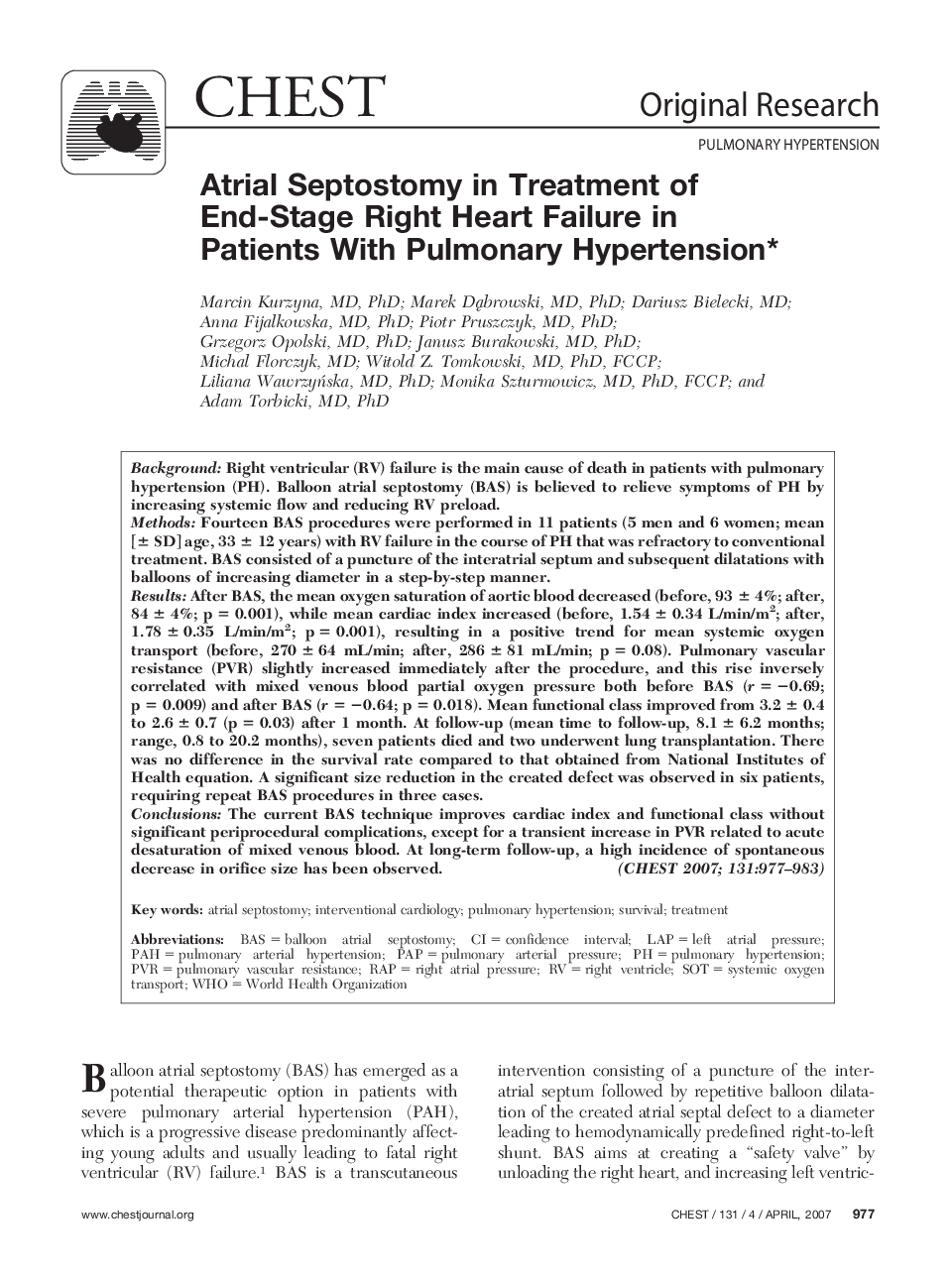| کد مقاله | کد نشریه | سال انتشار | مقاله انگلیسی | نسخه تمام متن |
|---|---|---|---|---|
| 2905031 | 1173421 | 2007 | 7 صفحه PDF | دانلود رایگان |

BackgroundRight ventricular (RV) failure is the main cause of death in patients with pulmonary hypertension (PH). Balloon atrial septostomy (BAS) is believed to relieve symptoms of PH by increasing systemic flow and reducing RV preload.MethodsFourteen BAS procedures were performed in 11 patients (5 men and 6 women; mean [± SD] age, 33 ± 12 years) with RV failure in the course of PH that was refractory to conventional treatment. BAS consisted of a puncture of the interatrial septum and subsequent dilatations with balloons of increasing diameter in a step-by-step manner.ResultsAfter BAS, the mean oxygen saturation of aortic blood decreased (before, 93 ± 4%; after, 84 ± 4%; p = 0.001), while mean cardiac index increased (before, 1.54 ± 0.34 L/min/m2; after, 1.78 ± 0.35 L/min/m2; p = 0.001), resulting in a positive trend for mean systemic oxygen transport (before, 270 ± 64 mL/min; after, 286 ± 81 mL/min; p = 0.08). Pulmonary vascular resistance (PVR) slightly increased immediately after the procedure, and this rise inversely correlated with mixed venous blood partial oxygen pressure both before BAS (r = −0.69; p = 0.009) and after BAS (r = −0.64; p = 0.018). Mean functional class improved from 3.2 ± 0.4 to 2.6 ± 0.7 (p = 0.03) after 1 month. At follow-up (mean time to follow-up, 8.1 ± 6.2 months; range, 0.8 to 20.2 months), seven patients died and two underwent lung transplantation. There was no difference in the survival rate compared to that obtained from National Institutes of Health equation. A significant size reduction in the created defect was observed in six patients, requiring repeat BAS procedures in three cases.ConclusionsThe current BAS technique improves cardiac index and functional class without significant periprocedural complications, except for a transient increase in PVR related to acute desaturation of mixed venous blood. At long-term follow-up, a high incidence of spontaneous decrease in orifice size has been observed.
Journal: Chest - Volume 131, Issue 4, April 2007, Pages 977–983